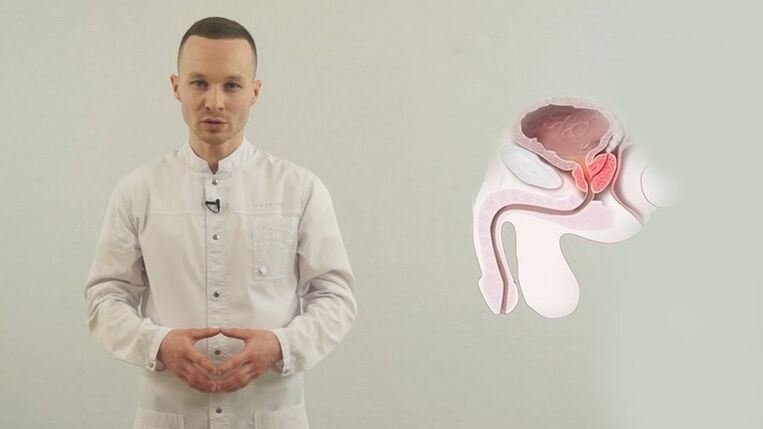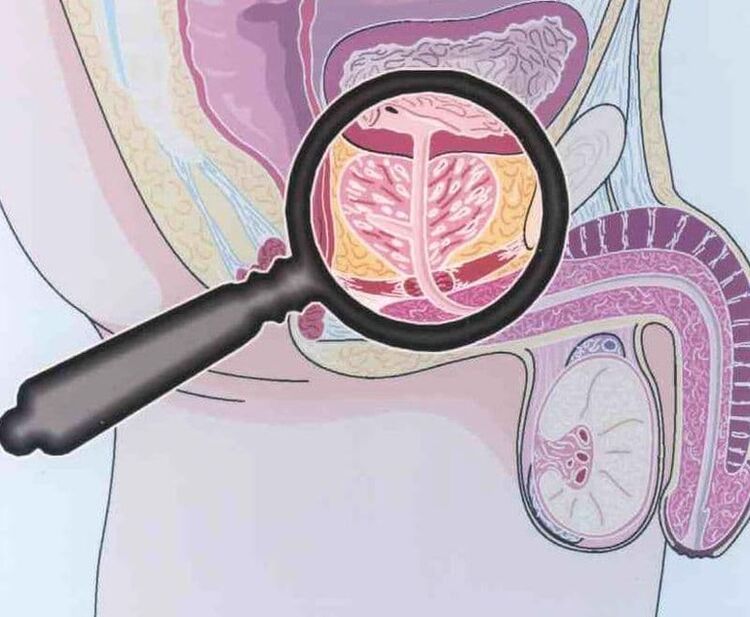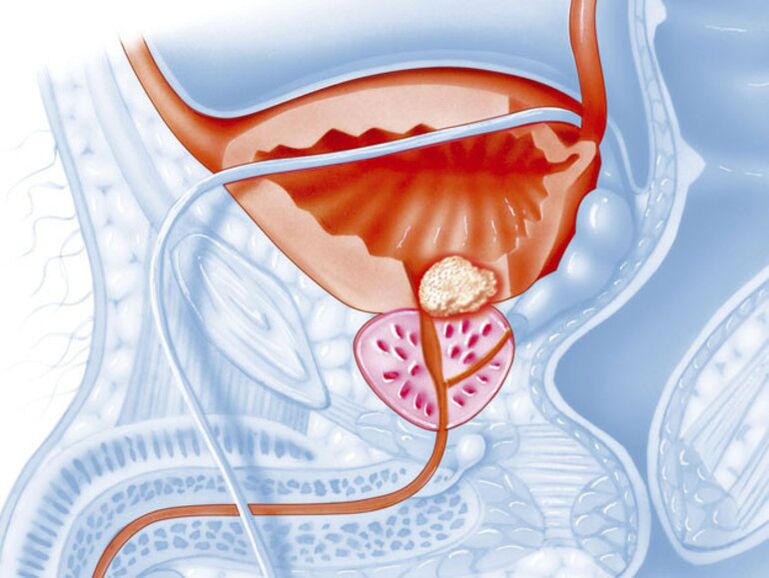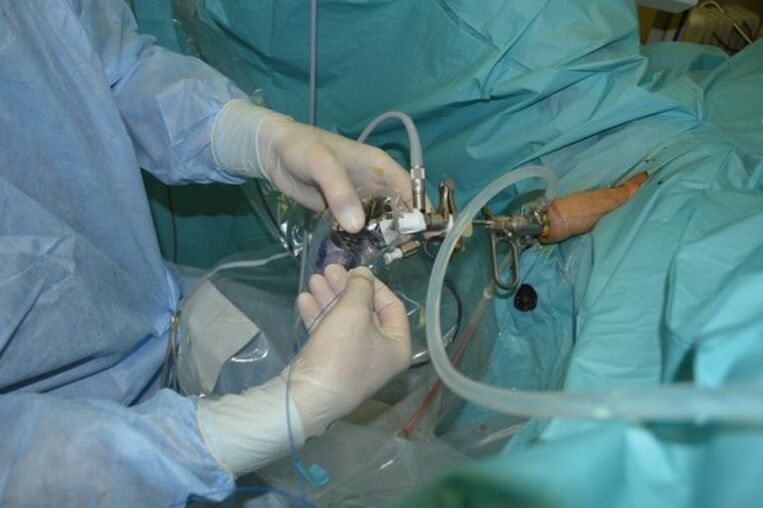Middle-aged and older men often suffer from prostate-related urogenital diseases. This organ is prone to inflammatory processes that lead to severe discomfort. The most common pathology is chronic prostatitis. Treatment is difficult and accompanied by severe clinical manifestations.

Pathological cause
According to statistics, about 30% of men of reproductive age suffer from one or another form of prostatitis. In almost 70% of cases, the disease is asymptomatic, which poses a health threat.There are many reasons for the development of pathology:

- Neglecting the symptoms of the acute form of the disease often results in its transition to a chronic phase with periodic relapses.
- Periodic hypothermia and frequent catarrhal lesions of the body can trigger inflammation of the glands.
- A sedentary lifestyle can cause blood to stagnate in the pelvis and disrupt the blood supply to the prostate. If a person's occupational activities are related to continuous sitting, the probability of developing prostatitis increases several times.
- Choose tight underwear that squeezes your genitals.
- Bad habits (drinking, smoking) often lead to the development of pathologies, since they disrupt all vital processes in the body.
- Chronic infectious diseases of the urinary system can also cause glandular inflammation.
- Pathology of STDs in acute and chronic forms. The infection may spread to the glands if the expert's advice is violated or the symptoms of the disease are ignored.
- Often feel stressed and nervous. These factors can cause pathology, especially at the same time reduce immunity.
- Lack of minerals and vitamins in the daily diet may be a contributing factor. If the deficiency is permanent, other diseases join chronic prostatitis.
Rare sexual intercourse and the absence of a permanent partner increase the risk of chronic prostatitis. In this case, treatment is also delayed because the patient experiences not only physical but also emotional discomfort.
Disease classification

Depending on the cause of the onset and the course of the pathological process, there are two types of diseases: bacterial and non-bacterial. In addition, experts distinguish between asymptomatic or tension-free prostatitis. Each species has its own characteristics.
Bacterial prostatitis is easily detected during diagnostic workup. Tests usually reveal the source of the inflammation. Especially in the process of massaging the glands, there are many pathogens in the secret released. In the blood, levels of white blood cells are almost always elevated because the body produces them in large quantities to fight pathogens.
The nonbacterial form of the pathology is characterized by a milder course, but almost always the patient suffers from severe pain in the small pelvis. Pelvic pain syndrome is considered the main criterion for diagnosis.
Since there are no obvious signs of inflammation, it is difficult to identify the asymptomatic type of the disease. There are pathological changes in the prostate, but men cannot feel them. Experts make the diagnosis incidentally or while examining other pathologies.
clinical picture
In the acute form of the pathology, a person will immediately feel their condition worsening, but in the case of chronic prostatitis, there may be no symptoms, which complicates the diagnosis very much.With the long-term progression of the disease, the following symptoms appear:

- Discomfort during urination, extending into the bladder projection area;
- Frequent urges to empty with reduced urine output;
- discomfort during intercourse, erection and ejaculation problems;
- A feeling of incomplete bladder emptying associated with bladder stenosis, resulting in prolonged but ineffective urination;
- The development of cystitis, pyelonephritis is associated with the proliferation of bacteria in the bladder and the spread of infection to the kidneys;
- a change in the color of the urine, the appearance of blood or pus impurities;
- decreased libido;
- General weakness, fatigue, decreased performance;
- Irritability and psycho-emotional stress;
- a slight increase in body temperature;
- Pelvic and scrotal pain that radiates to the sacrum or rectum.
The severity of symptoms depends on the extent of damage to the prostate tissue. Sometimes patients only have pain and nothing else.
If a patient does not see a doctor for a long time, he may develop complications. The most common of these is seminal vesiculitis, or inflammation of the seminal vesicles. Often, when symptoms of chronic prostatitis appear at a young age, patients are diagnosed with difficult-to-treat infertility.
The most dangerous consequence of undertreated or neglected prostatitis is prostate cancer. Often a benign lesion of the organ - an adenoma, may develop into a malignant tumor.
diagnosis method
Before treating chronic prostatitis, a comprehensive diagnostic workup is necessary. During initial treatment, the specialist interviews the patient to learn about the patient's habits, lifestyle characteristics, frequency of sexual contact, and occupational activities. The information helps to identify the suspected cause of the disease. Doctors then listen to the patient's complaints and determine the extent of damage to the glands.

The next step in the diagnosis is a clinical blood and urine test. They usually show an increased number of white blood cells and an increased erythrocyte sedimentation rate. This suggests an inflammatory process in men.
The patient must undergo an X-rayProstate and Ultrasound. Thanks to these methods, you can see changes in body structure, deviations in one direction or the other. In addition, computed tomography can be performed to identify accompanying lesions of the urogenital system.
If a tumor is suspected, a biopsy specimen should be obtained. In the laboratory, experts study the structure of cells and make final diagnoses. If the tumor is benign, doctors also determine the likelihood of its malignant transformation to malignant. After receiving the results of the diagnostic tests, the specialist determines the direction of treatment.
medical treatement
Drug treatment of chronic prostatitis is considered the most common method. If there is a possibility of a cure, doctors always choose a conservative approach.The most commonly used drugs are:
- Antibacterial agents can relieve inflammation for a short period of time and prevent it from spreading to adjacent organs. In most cases, penicillin and fluoroquinolones are used in tablet form. When the form is run, a powder is prescribed to prepare the solution. This drug is administered intravenously or intramuscularly in a hospital setting. Since these drugs were ineffective, macrolides were used, which were more effective. Popular drugs in this group are available in tablet and lyophilized form for the preparation of injectable solutions. The course of treatment lasts 10 to 20 days, depending on the severity of the condition.
- NSAIDs are prescribed to relieve pain and prevent further progression of the pathological process. Courses usually do not exceed 7 days. Patients with digestive tract disorders should not take these drugs without consulting their doctor.
- Muscle relaxants help relax smooth muscles and make it easier to urinate. The duration and dosage of treatment is determined by the doctor.
- Rectal suppositories relieve swelling, pain, and inflammation and improve a patient's general condition. The duration of the therapeutic effect is 10-14 days.
In addition, the treatment regimen includes vitamin complexes to strengthen the immune system and restore the body quickly after treatment. Among these funds there is a complex specially designed for men. The minimum duration of its reception process is 30 days.
operation treatment

If the lesion cannot be cured conservatively, doctors decide to perform surgery to completely or partially remove the organ. The absolute indication for surgical intervention is prostate cancer.
Transurethral resection involves dissecting the urethra and removing part of the glands to relieve the condition. If removal is not required, a simple organ dissection is performed to normalize urination.
Open adenoma resection is used for the addition of significant glandular growth and other pathologies. Surgery is performed under general anesthesia. The technique is more commonly used to treat elderly patients when other means and interventions are ineffective.
Use of physical therapy

Along with medication, physical therapy is often used to speed recovery and prevent complications.The most popular and effective method is massage.The prostate passes through the rectum. The technology improves blood supply and nutrition to organs, preventing the spread of inflammation to adjacent organs.
A minimum of 10 treatments are required to achieve the therapeutic effect. The procedure is performed by specialists in a hospital or clinic.
Electrophoresis of the projection area of the prostate allows you to normalize blood flow to it. The essence of the technology is to use low-frequency electrical currents to positively influence the state of the urogenital system, stimulate tissue regeneration, and relieve inflammation. The program has a minimum of 10 lessons, and sometimes more procedures are required for lasting results.
Ultrasound and laser therapy, paraffin therapy, and other methods are often prescribed. The choice of treatment depends on the individual characteristics of the patient's body.
Precaution
Following simple rules will help avoid the development of chronic prostatitis. It is recommended to avoid hypothermia and live an active lifestyle. You shouldn't torture your body with vigorous exercise, but moderate and regular exercise will help avoid stagnant blood in the pelvis and the development of prostatitis.
Experts recommend including pumpkin seeds, fresh vegetables, fruits and herbs in your diet. Do not abuse alcoholic beverages. Quitting smoking will reduce the risk of developing inflammatory processes. A balanced diet will help maintain the immune system and prevent colds and viral diseases.
To prevent prostatitis, it is necessary to visit a urologist every 6 months. This will detect pathology at an early stage and prevent it from turning into an overlooked form. When the first signs of the disease appear, you should contact a medical facility so that treatment can be started in a timely manner and complications can be avoided.





























